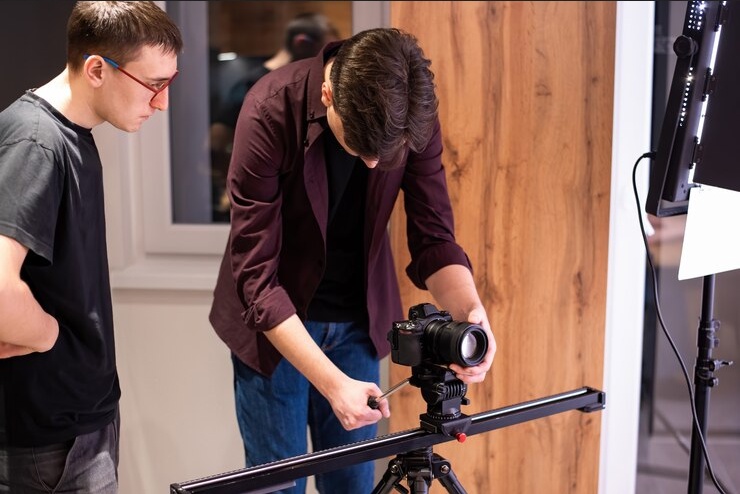Introduction
In the realm of visual storytelling, few mediums have the power to captivate and educate like documentary videos. These compelling works of art provide a window into different cultures, shed light on important social issues, and offer a unique perspective on historical events. Behind every captivating documentary lies a team of dedicated professionals who work tirelessly to bring these stories to life. In this article, we will take a deep dive into the world of documentary video production, exploring the process, challenges, and the impact of this powerful medium.
The Art of Storytelling
At the heart of every documentary is a compelling story. Documentaries have the power to inform, inspire, and evoke emotions in viewers. The art of storytelling in documentary video production involves meticulous research, careful planning, and skillful execution. A documentary filmmaker must have a keen eye for detail and a deep understanding of the subject matter. They must be able to weave together interviews, archival footage, and narration to create a cohesive and engaging narrative.
Pre-Production: Laying the Foundation
Before the cameras start rolling, a documentary production goes through a rigorous pre-production phase. This is where the groundwork is laid for the entire project. The first step is to identify a topic or subject that is worth exploring. This could be anything from a social issue to a historical event or a personal story. Extensive research is conducted to gather information, identify key characters, and outline the story arc.
Once the topic is finalized, the next step is to secure funding for the project. Documentaries can be expensive to produce, and funding can come from various sources such as grants, investors, or crowdfunding campaigns. A budget is created, and a production team is assembled, including a director, producer, cinematographer, sound recordist, and editor.
Production: Bringing the Story to Life
With the pre-production phase complete, it's time to start filming. This is where the magic happens, as the production team works together to capture the footage that will form the backbone of the documentary. Depending on the nature of the project, filming can take place in various locations, from remote corners of the world to bustling city streets.
The cinematographer plays a crucial role in capturing visually stunning shots that enhance the storytelling. They work closely with the director to ensure that each frame is composed with precision and intention. The sound recordist captures high-quality audio, ensuring that every word spoken and every ambient sound is crystal clear.
Post-Production: Crafting the Narrative
Once all the footage has been captured, the documentary enters the post-production phase. This is where the story truly comes together. The editor sifts through hours of footage, selecting the best shots and piecing them together to create a coherent narrative. They also work on color grading, sound design, and adding any necessary visual effects.
In addition to the editing process, post-production also involves the creation of a captivating soundtrack. Music can greatly enhance the emotional impact of a documentary, and a skilled composer or music supervisor is brought in to create an original score or select existing music that complements the story.
Challenges in Documentary Video Production
While the end result of a documentary can be awe-inspiring, the journey to get there is not without its challenges. One of the biggest challenges is gaining access to the subject matter. Some topics may be sensitive or controversial, making it difficult to secure interviews or obtain necessary permissions. Documentaries often require extensive travel and can involve working in challenging environments, which adds logistical complexities to the production process.
Another challenge is maintaining objectivity and balance in storytelling. Documentaries have the power to shape public opinion, and it is important for filmmakers to present a fair and accurate portrayal of the subject matter. Balancing multiple perspectives and avoiding bias requires careful consideration and ethical decision-making.
The Impact of Documentary Video Production
Documentaries have the power to create lasting change and raise awareness about important issues. They can spark conversations, challenge societal norms, and inspire action. Through the lens of a documentary, viewers can gain a deeper understanding of the world around them and develop empathy for people and cultures they may have never encountered otherwise.
Documentaries also have the ability to preserve history and capture moments in time. They serve as a valuable record of events and can be used for educational purposes for future generations. In a world saturated with fictional narratives, documentaries provide a refreshing dose of reality and authenticity.
Conclusion
Documentary video production is a complex and rewarding process that requires a combination of creativity, technical skills, and a deep passion for storytelling. From the initial stages of research and pre-production to the final touches in post-production, every step plays a crucial role in bringing a documentary to life. Through the power of visual storytelling, documentaries have the ability to educate, inspire, and create lasting change. So the next time you watch a captivating documentary, take a moment to appreciate the hard work and dedication that went into its creation.


No comments yet